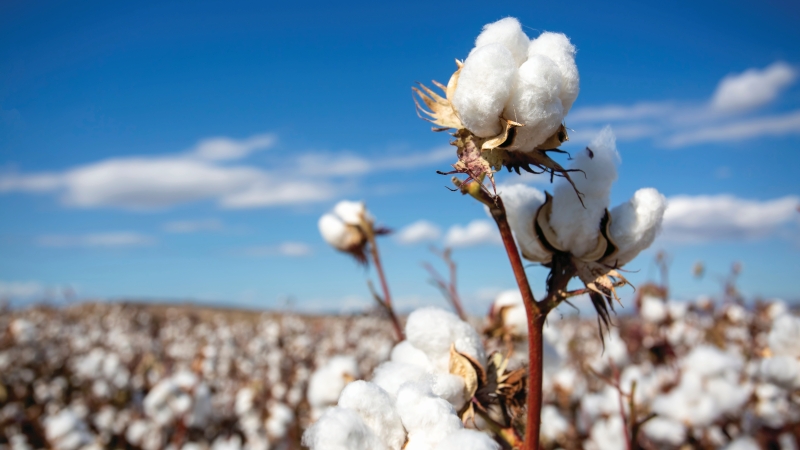Cotton Market Claws Ahead as Planting Reports Loom
The cotton market tugged at its bootstraps all week and finally got prices back to the 87-cent area, basis the new crop December futures contract. The old crop July contract moved past first notice day with little fanfare, and July futures settled the week at 86.43. It is expected that July will tend to hold the 85-89 cent trading range as it moves into delivery.
December futures continue to find excellent bullish support from both the supply side and demand side of the price equation.
The market is now anticipating and speculating about the June 30 Planted Acreage report. Most expect planted acreage will be 11.6 million acres or below – a number the market would find friendly. Most have concluded that probable planting will fall within the 11.3-11.6 million acres. Surprisingly, analysts’ current guess of planted acreage ranges from 10.8 to 12.3 million acres – a very wide range.
USDA’s March 1 Intentions were 12 million acres, but ever-increasing grain/oilseed prices and “prevented plantings” weather events certainly reduced that number. The 2020 planted acreage was 12.1 million acres. It was initially thought that since insurance planting prices were a record high of 83 cents that plantings would increase. However, drought and the ever-increasing grain/oilseed price complex worked against any expansion in cotton plantings.
The December contract is now consistently bumping up against the 87-88 cent barrier as it attempts to break above 90 cents and move to the 93-cent trading level. The top of the range is expected, but it will take numerous attempts to push prices to that level. Other factors such as on-call sales and Chinese demand will work to support higher prices. Yet, for now, the market is attempting to assess the condition of the U.S. crop and the entire Northern hemisphere crop as well. Thus, daily discussions surrounding crop conditions will continue to be an important part of the forward price debate.
The market is focused on crop size and crop conditions much more so than in the past. U.S. carryover as of August 1 – just weeks away – is currently forecast by USDA at only 2.9 million bales. That number is expected to fall as much as 100,000 and 300,000 bales, exacerbating the tightness in U.S. stocks and the attempt to pull prices higher.
While welcome moisture is forecast over the Texas Plains this weekend, some 12% of the U.S. crop remains in the long-term drought zone according to the USDA-NOAA weather data. This is down only 1% from last week, and most of the drought plagued area is on the western fringe of the Texas I-N and I-S crop reporting districts. Of equal concern is the drought situation that runs through of the heart of the Oklahoma cotton area. Small pockets of drought also remain in North Carolina and South Carolina.
The prime fruiting season (July and into early August) is upon us, and the crop will need excellent conditions in the coming six weeks.
Textile mills have truly kicked the can down the road in refusing to fix prices in the low 80s. As indicated by the on-call sales report, mills have rolled their price fixing decision to December. Most likely they will kick the can again and roll price fixing to the March contract.
Typically, mills have been able to fix prices based on the December contract – a time when cotton growers were on the opposite side of the market. However, growers are delaying their pricing requirements, and mill on-call sales are building higher and higher. Thus, mills may well be caught in November needing to buy cotton (or cotton futures) just when many expect the December contract to begin to reach its peak.
Cotton prices will continue to climb.
Give a gift of cotton today.








